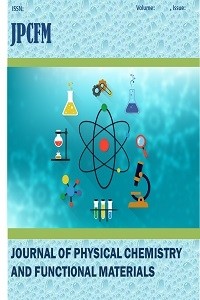INVESTIGATION OF HARTREE-FOCK AND DENSITY FUNCTIONAL THEORY OF PLATINUM COMPLEXES
INVESTIGATION OF HARTREE-FOCK AND DENSITY FUNCTIONAL THEORY OF PLATINUM COMPLEXES
Hartree-Fock, Density Functional Theory platinum(II)complex,
___
- [1] Krylova, L., Kovtunova, L., and Romanenko, G., 2008. Pt (II) and Pd (II) Complexes with β-Alanine, Bioinorganic chemistry and applications, 2008.[2] Vezzu, D.A., Lu, Q., Chen, Y.-H., and Huo, S., 2014. Cytotoxicity of cyclometalated platinum complexes based on tridentate NCN and CNN-coordinating ligands: Remarkable coordination dependence, Journal of inorganic biochemistry, 134, 49-56.[3] Ajeel, F.N., Khudhair, A.M., and Mohammed, A.A., 2015. Density functional theory investigation of the physical properties of dicyano pyridazine molecules, International Journal of Science and Research, 4(4), 2334-2339.[4] Chermette, H., 1999. Chemical reactivity indexes in density functional theory, Journal of Computational Chemistry, 20(1), 129-154.[5] Sherrill, C.D., 2000. An introduction to Hartree-Fock molecular orbital theory, School of Chemistry and Biochemistry Georgia Institute of Technology.[6] Hantsch, F.C., 2012. The Hartree-Fock equations in quantum mechanics.[7] Iwakiri, A., Konno, Y., and Shinozaki, K., 2019. Determination of excimer emission quantum yield of Pt (dpb) Cl (dpbH= 1, 3-di (2-pyridyl) benzene and its analogues in solution, Journal of Luminescence, 207, 482-490.
- ISSN: 2651-3080
- Yayın Aralığı: Yılda 2 Sayı
- Başlangıç: 2018
- Yayıncı: Niyazi BULUT
INVESTIGATION OF ELECTRONIC PROPERTIES OF POLY(DEAMST0.70-CO-BMA) COPOLYMER: AB-INITIO APPROACH
INVESTIGATION OF HARTREE-FOCK AND DENSITY FUNCTIONAL THEORY OF PLATINUM COMPLEXES
Simulation of 4-Qubit Full-Adder Circuit by Mathematica
Chemical Structural and Vibrational Analysis of Potassium Acetate: A Density Function Theory Study
İbrahim NAZEM QADER, Ahmad MOHAMMAD, Yousif Hussein AZEEZ, Riyadh Saeed AGİD, Henar Sleman HASSAN, Srwa Hashim Mohammed AL-NABAWİ
Seda HEKİM, Yousif Hussein AZEEZ, Sinan AKPİNAR
Physical Properties of Anthra [2,3-b;6,7-b'] Dithiophene Organic Material
Effect of epoxy resin in synthesis of rubber-metal adhesive
Temperature Effects on the Adsorptıon with Mıcrobeads In Reactıve Black 5 m-Poly (EGDMA-VIM)
